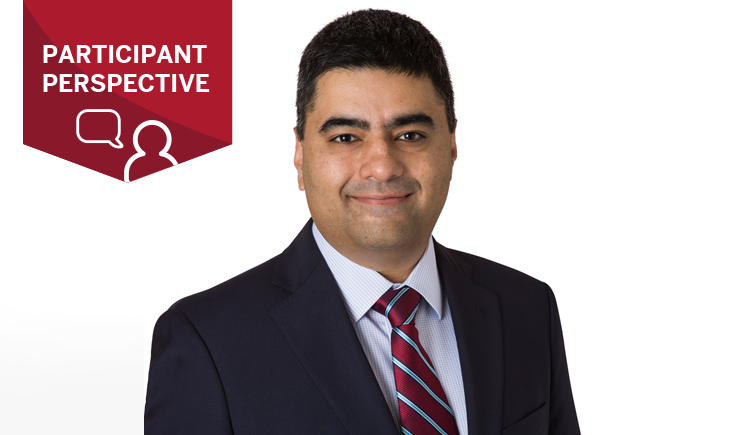
Information regarding COVID-19 has rapidly evolved. The content in this article provides a historical snapshot of events surrounding the date of posting.
In the midst of the COVID-19 pandemic, learning health systems can provide a valuable infrastructure through which groups and institutions can mobilize to address common problems and rapidly disseminate evidenced-based findings across disciplines, according to Charles P. Friedman, PhD, Department Chair of Learning Health Sciences at the University of Michigan Medical School. Friedman is also a co-director for Harvard Medical School’s postgraduate program, Safety, Quality, Informatics and Leadership.
Clinicians, researchers and health care leaders can also play an important role in this journey—helping their organizations to integrate science, data, culture and lessons learned—with the goal of ultimately leading to improved quality and safety in every aspect of their efforts, he says.
The Value of Learning Health Systems
“A learning health system marries discovery—data and analysis—and implementation into one system. Discovery is one side of the cycle, and implementation is the other,” Friedman says. “It creates a cycle with lessons from implementation facilitating additional discovery, so the process acts like a continuous circle.”
Yet, despite the growing recognition of the value a learning health system brings to an organization, Friedman points out that many institutions, and the nation as a whole, lack the capability to implement such an approach to mobilize clinical and public health resources to respond to a problem or crisis.
“COVID-19 has shown how important having a learning health system infrastructure is to quickly collect data, learn from it and form communities to address the issues. In the absence of broad learning health system usage, we have had to cobble together things to try and make a system, but we have been starting from scratch,” he stresses.
This makes it important that leaders be trained in the key elements of this infrastructure, so they can help their institutions—and the field—embrace this model moving forward.
Creating a Continuous Improvement Cycle
For instance, in COVID-19, research is essential to inform how health systems are responding to patients with serious cases of this coronavirus; following the outcomes of different approaches can also inform research being conducted by scientists who are racing to understand the SARS-CoV-2 virus and how best to prevent and treat it.
To show this concept in action, Friedman describes a collaboration involving experts from the United States, Spain and Italy that envisions the multi-national framework necessary to collect and analyze high-quality data and to use the results to guide clinical responses to the pandemic. Such a system also serves as a valuable resource to help countries be prepared for future pandemics.
Learning Health Systems: Tackling Big and Small Problems
But not all learning health systems need to tackle such widespread public health problems. Leaders can also help their organizations establish learning and improvement cycles to solve smaller-scale but still very important problems as well, Friedman explains. He shares an example of how a learning health system can address a very specific issue—the mortality rate from cardiac arrests that occur outside of the health care setting.
“In order to survive with full neurological function, people who suffer from sudden cardiac arrest must have their circulation reestablished quickly,” he says. Generally, only ten percent survive with full neurological capacity.
“We formed a learning improvement cycle to address this issue and are coming up with ways to improve the process of responding to cardiac arrest patients in ways that would improve the outcomes,” he says.
“We included a community of many stakeholders, such as 911 call centers, paramedics, first responders and emergency physicians, to collect data to be analyzed. This is a difficult problem requiring a multi-stakeholder approach. It requires broad teamwork, good data and effective interventions to make the changes that are necessary to get circulation established more quickly,” Friedman stresses. The findings can then be scaled to a broader audience.
“With a learning health system, there may be many such cycles going on at the same time. All cycles are supported by an infrastructure that provides a variety of services. The infrastructure is what makes it a system,” Friedman stresses.
Many organizations that are moving toward learning health systems have improvement cycles under way that are focused on specific problems and then have the infrastructure in place to support these efforts.
The PedsNet Learning Health System Model
A single organization can become a learning health system, and a network can also form into a learning health system, Friedman explains. For instance, PedsNet is an online platform that serves as a national pediatric learning health system. Its goal is to bring groups together to improve pediatric care and outcomes. Rather than having pediatric organizations and research institutions working independently and inefficiently, PedsNet provides a hub that facilitates the sharing of data and informatics and helps group take a more integrated approach toward a common national vision. This model can also drive other similar efforts.
Friedman says that in COVID-19 and beyond, learning health systems are a framework that other groups and networks can also follow—both to manage everyday challenges and improve safety, quality and outcomes and also to disseminate information quickly and mobilize effective responses to pressing problems.
Written by Lisa D. Ellis


